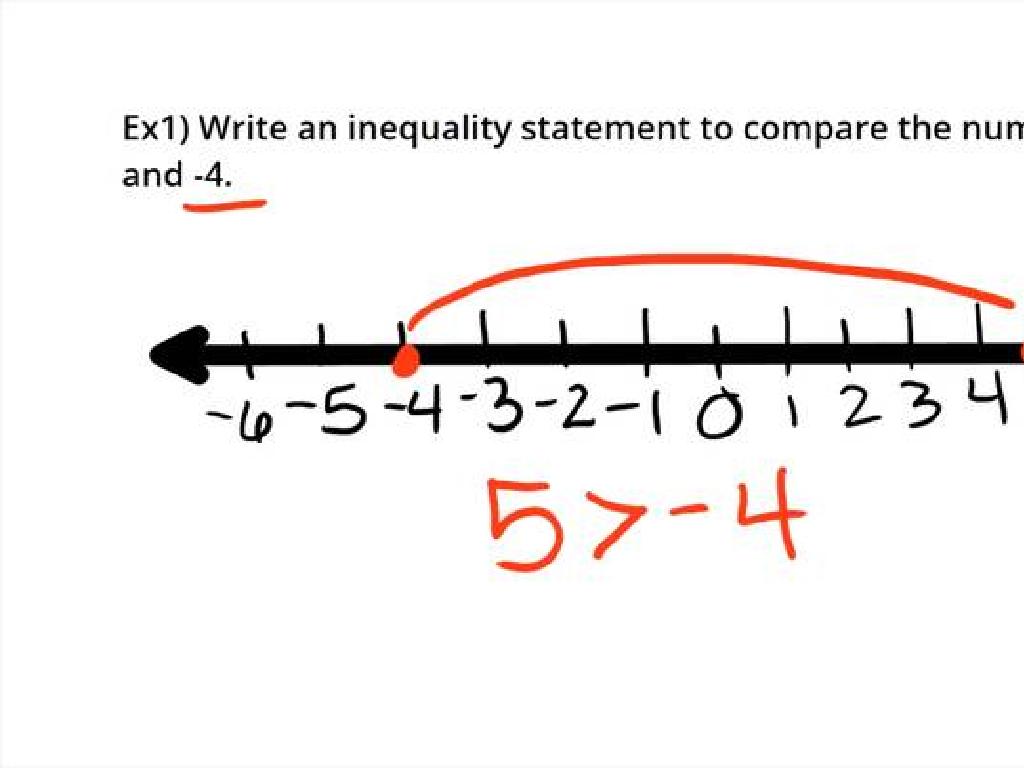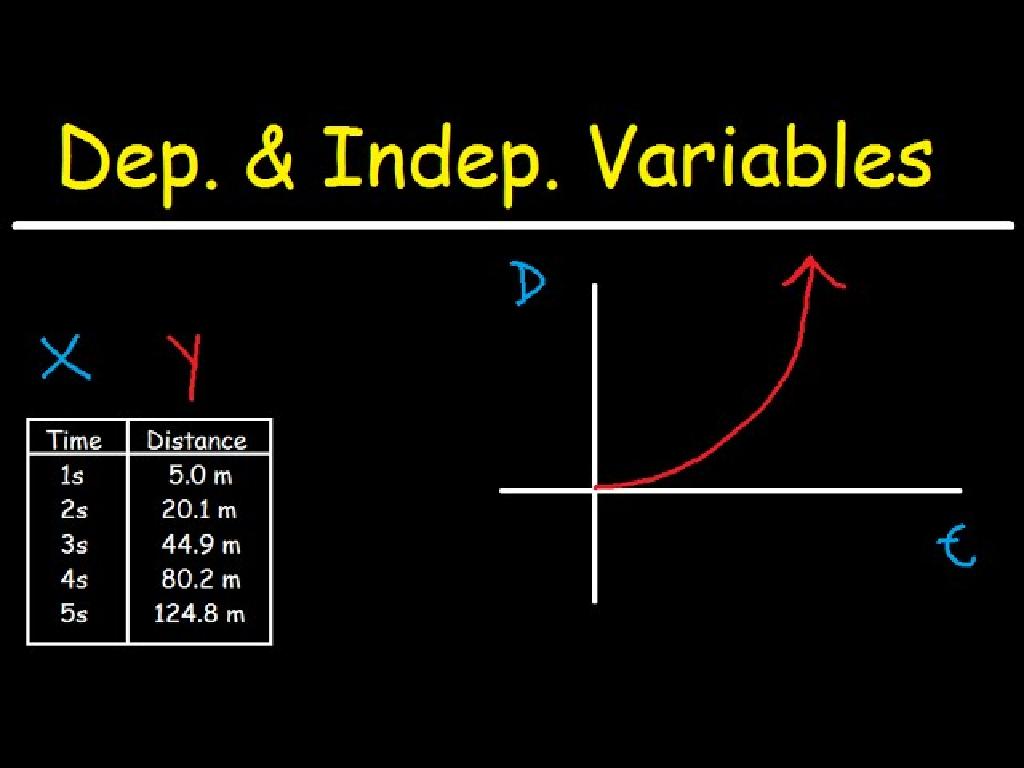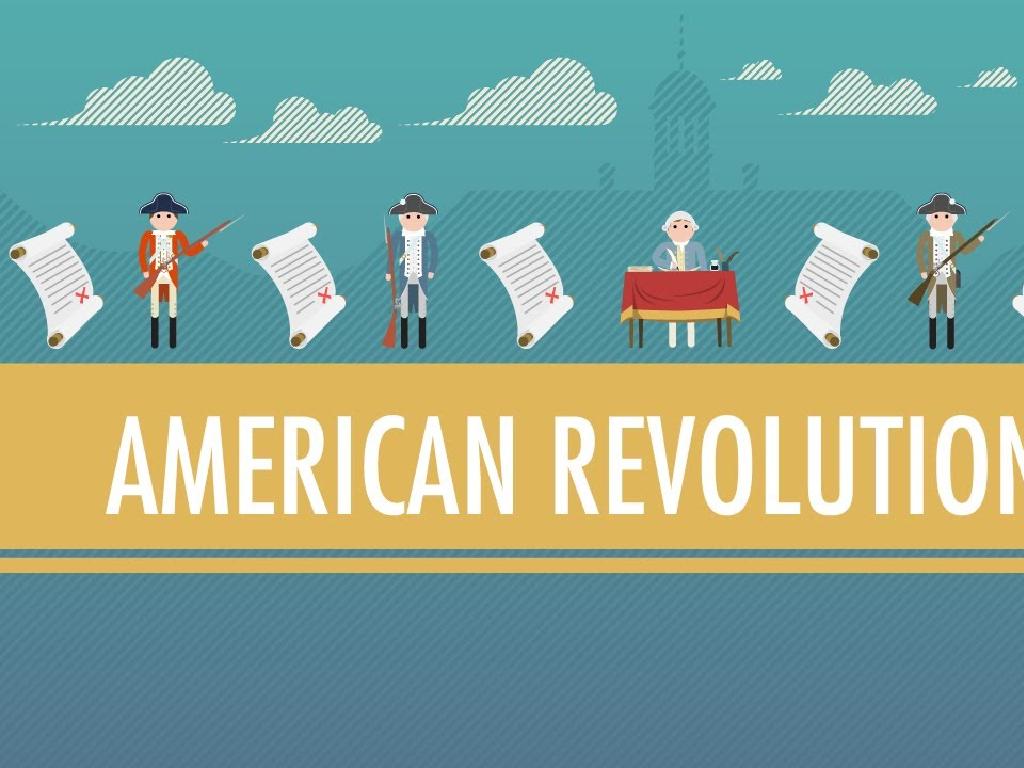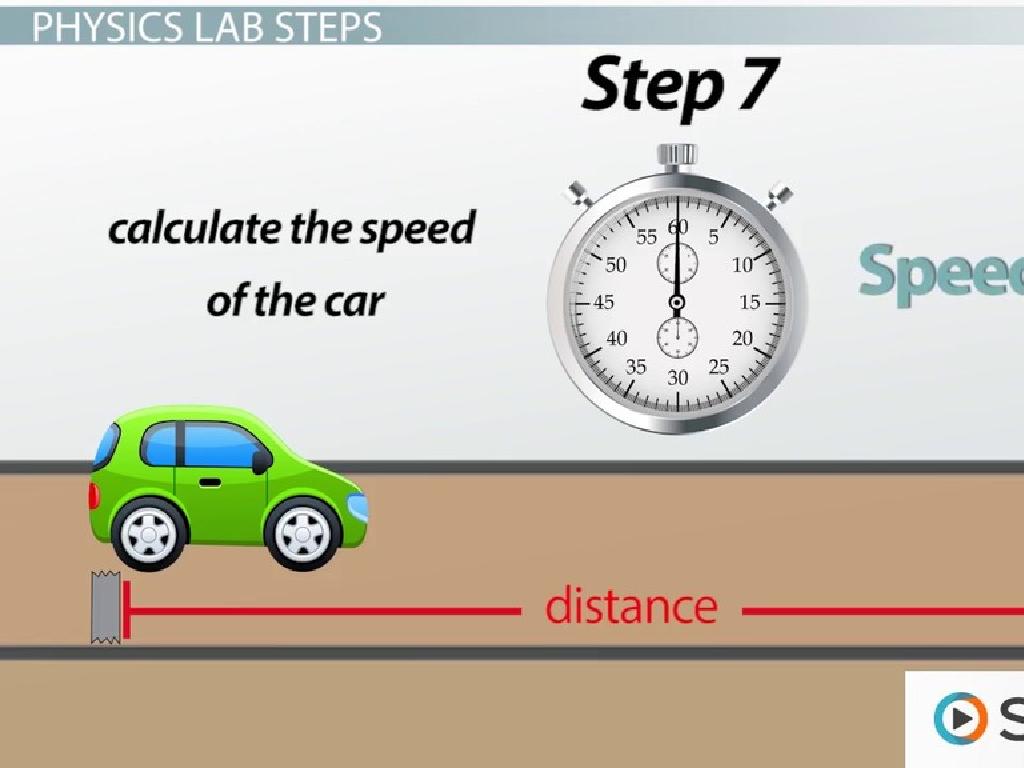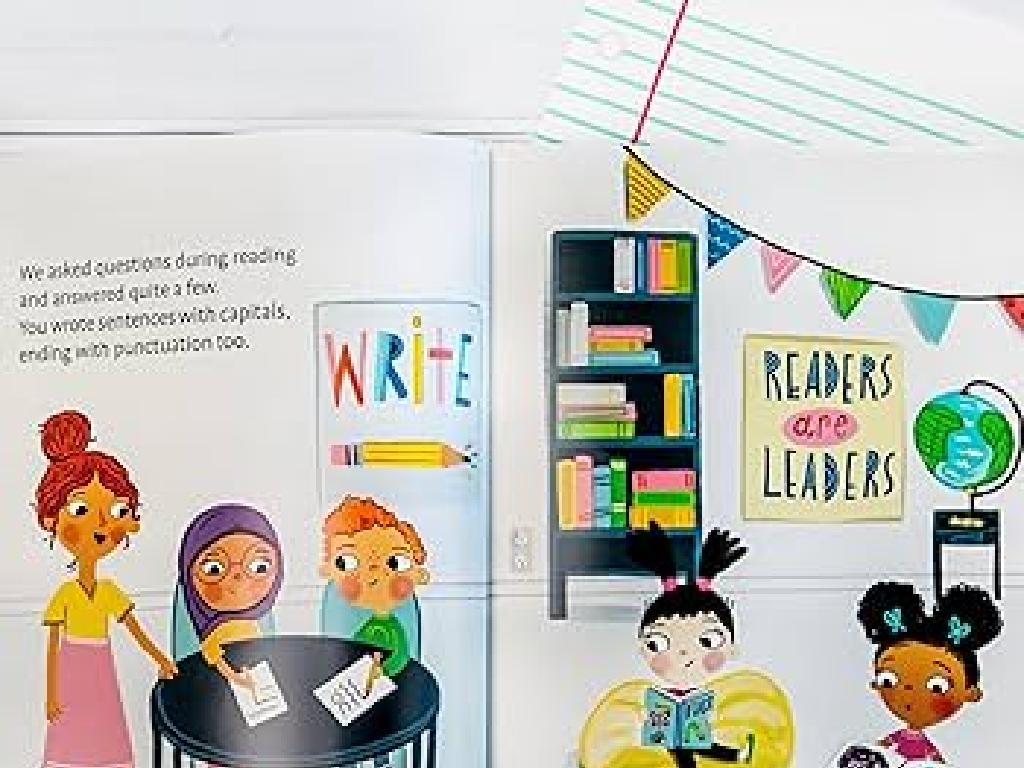Parts Of A Circle
Subject: Math
Grade: Seventh grade
Topic: Two-Dimensional Figures
Please LOG IN to download the presentation. Access is available to registered users only.
View More Content
Welcome to the World of Circles!
– Explore two-dimensional figures
– Significance of circles in math
– Circles are everywhere: wheels, clocks, and more
– Discovering parts of a circle
– Learn about radius, diameter, circumference
– Engage with today’s circle lesson
|
This slide introduces students to the concept of two-dimensional figures with a focus on circles, a fundamental shape in mathematics and everyday life. Highlight the omnipresence of circles in the world around us and their importance in various fields such as engineering, art, and science. The lesson will cover key parts of a circle including the radius, diameter, and circumference, providing a foundation for understanding more complex geometric concepts. Encourage students to think of circular objects they encounter daily to make the lesson relatable. The aim is to create interest and curiosity about the mathematical properties of circles.
Exploring Circles in Geometry
– Definition of a circle
– A circle is a round shape with all points equidistant from the center
– Properties of a circle
– Circles have constant diameter, radius, and circumference
– Circles in the real world
– Wheels, clocks, and pizzas are everyday examples of circles
|
Begin the lesson by defining a circle as a two-dimensional shape where all points are an equal distance from a central point. Discuss the properties of a circle, including the concepts of radius, diameter, and circumference, which are all constant for a given circle. Emphasize that the radius is half the diameter and that the circumference is the perimeter of the circle. Provide relatable examples such as wheels, which help in transportation, clocks, which help us tell time, and pizzas, a favorite food, to illustrate circles in everyday life. This will help students connect the mathematical concept to tangible objects they interact with regularly.
Circle Basics: Center, Radius, and Diameter
– Identifying the circle’s center
– Defining and measuring radius
– Radius: distance from center to any point on the circle
– Defining and measuring diameter
– Diameter: a line that passes through center, touching two points on the circle
– Relationship: radius and diameter
– Diameter is twice the length of the radius
|
This slide introduces students to fundamental concepts of a circle. Start by showing how to locate the center of a circle. Then, define the radius as the distance from the center to any point on the circle’s edge, and show how to measure it. Next, explain that the diameter is a straight line that passes through the center of the circle and touches two points on its edge, and demonstrate how to measure it. Emphasize that the diameter is always twice as long as the radius, which is a key relationship in understanding circles. Use diagrams to visually represent these parts and encourage students to draw their own circles and label the center, radius, and diameter.
Circumference of a Circle
– Definition of circumference
– The distance around the circle’s edge
– Circumference calculation formula
– Use C = Àd or C = 2Àr, where d is diameter and r is radius
– Practice problem example
– Find the circumference of a circle with a radius of 4 inches
– Steps to solve the problem
– Identify radius or diameter, plug into formula, calculate
|
The circumference is the perimeter or the distance around a circle. To calculate it, students need to understand the concepts of diameter (the distance across the circle through the center) and radius (the distance from the center to the edge of the circle). The formulas C = Àd or C = 2Àr are used, where À (pi) is approximately 3.14. For the practice problem, guide students to identify the radius as 4 inches, use the formula C = 2Àr, and calculate the circumference. This exercise will help solidify their understanding of how to apply the formula to real-world problems.
Area of a Circle
– Definition of circle area
Area is the space inside the circle’s boundary.
– Area formula: A = Àr²
– Example with given radius
If radius is 3 cm, area is A = À(3)² = 28.27 cm².
– Example with given diameter
If diameter is 10 cm, radius is 5 cm, so area is A = À(5)² = 78.54 cm².
|
The area of a circle is the amount of space enclosed within its boundary. Start by explaining the concept of area in the context of circles. Introduce the formula for the area of a circle, A = Àr², where ‘A’ represents the area, ‘À’ is a constant approximately equal to 3.14, and ‘r’ is the radius of the circle. Provide an example calculation using a given radius, and another example using a given diameter, reminding students to first divide the diameter by two to find the radius. Encourage students to practice with different radii and diameters to strengthen their understanding.
Advanced Parts of a Circle
– Explore complex circle parts
– Chord: A line segment within the circle that touches 2 points on the circle.
– Define chord, secant, tangent
– Secant: A line that intersects a circle at two points. Tangent: A line that touches the circle at just one point.
– Understand arc and sector
– Arc: A part of the circumference of a circle. Sector: A ‘pizza slice’ of the circle, bounded by two radii and an arc.
– Relate parts to each other
– See how a chord is part of a secant, and how an arc is part of a sector.
|
This slide introduces students to the more complex parts of a circle beyond the basics. A chord is a line segment with both endpoints on the circle, while a secant is a line that cuts through the circle at two points. A tangent, in contrast, is a line that just touches the circle at one point. An arc represents a portion of the circle’s circumference, and a sector is like a slice of the circle, including an arc and two radii. It’s crucial to help students visualize these parts with examples, such as a chord being a ‘tightrope’ across the circle, and a tangent as a ‘starting line’ for a race around the circle. Encourage students to draw these parts in a circle and see how they interact for instance, how a secant extends beyond a chord, or how a sector encompasses an arc.
Let’s Practice: Parts of a Circle
– Label circle parts on handouts
– Pair up for circumference & area
– Find a partner and work on given problems
– Solve problems together
– Use formulas: Circumference = 2Àr, Area = Àr²
– Share and discuss answers
– Explain your solutions and understand others’
|
This slide outlines a class activity focused on reinforcing the students’ understanding of the parts of a circle, as well as the formulas for circumference and area. Students will start by labeling the parts of a circle on handouts, ensuring they can identify the radius, diameter, circumference, and center. Next, they will pair up to tackle problems related to the circumference and area of a circle, applying the formulas. After solving the problems, students will share their answers with the class and discuss any questions or difficulties they encountered. This activity encourages collaboration, problem-solving, and peer learning. As a teacher, facilitate the activity by providing guidance and clarifying any misconceptions. Possible activities for different pairs could include finding the circumference of circles with different radii, calculating the area of a shaded region within a circle, or even creating word problems for their peers to solve.
Real-World Applications of Circles
– Circles in daily life
– Examples: wheels, clocks, pizzas
– Wheels help in transportation, clocks measure time, pizzas show segments
– Group discussion activity
– Think of other objects that are circular and discuss why they are important
– Reflect on circular objects’ roles
|
This slide aims to help students connect the mathematical concept of circles with their everyday experiences. By recognizing circles in various objects like wheels, clocks, and pizzas, students can see the practical relevance of what they learn in class. Wheels are essential for motion in vehicles, clocks are pivotal in timekeeping, and pizzas can be used to illustrate fractions and segments. The group discussion is an interactive activity to engage students in identifying more circular objects and exploring their significance. This will enhance their understanding of geometry’s role in the real world and encourage them to observe their environment through a mathematical lens. Provide guidance on how to facilitate the discussion and ensure every student participates.
Circle Scavenger Hunt Activity
– Find circular items in class
– Measure circumference and area
– Use string or flexible tape for circumference
– Calculate using formulas
– Circumference formula: C = Àd or C = 2Àr
– Present findings to class
– Area formula: A = Àr²
|
This class activity is designed to help students apply their knowledge of circles in a practical setting. Students will search for circular objects around the classroom, such as clocks, coasters, or containers. They will then measure the circumference and area of these items using a piece of string or flexible tape measure and apply the formulas for circumference (C = Àd or C = 2Àr) and area (A = Àr²). Encourage students to work in pairs or small groups to foster collaboration. After completing their measurements and calculations, each group will present their findings to the class, explaining the process they followed and the results they obtained. This will reinforce their understanding of the concepts and improve their presentation skills. Provide additional support by reminding them how to use À (pi) in their calculations and ensure they understand the relationship between diameter, radius, and À.
Lesson Recap & Homework: Circle Essentials
– Review circle components
– Radius, diameter, circumference, and center
– Complete the worksheet
– Practice problems on circle parts
– Ask questions if unsure
– Use extra study resources
– Check textbooks and online materials
|
As we wrap up today’s lesson on the parts of a circle, it’s crucial for students to revisit the key components: radius, diameter, circumference, and the center point. The provided worksheet will reinforce their understanding through practical problems. Encourage students to ask questions about any part of the lesson they’re uncertain about. Offer additional resources such as textbooks, educational websites, and videos for further study. This will help solidify their grasp of the concepts and prepare them for more advanced topics in geometry.

